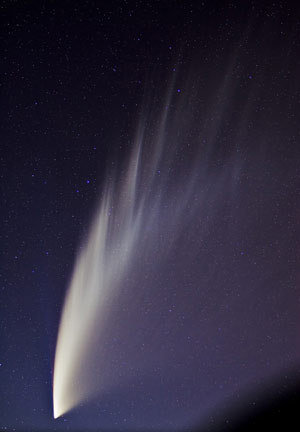Study shows comet much more like asteroid
Updated: 2008-01-28 10:45
A chemical analysis of samples of rock dust retrieved from a comet showed that the comet is much more like an asteroid than scientists had expected, media reported Monday.
|
|
A lot of the material detected in a comet called Wild 2 was formed very close to the sun in the early solar system and was somehow later transported to the outer solar system.
The rock dust closely resembles material from bodies called chondritic meteorites from asteroids in the asteroid belt between Mars and Jupiter. Asteroids are fragments of ancient space rubble, made of rock and metal, that commonly orbit the sun in that belt.
"Overall, this comet, Wild 2, is looking a lot more asteroid-like than we had expected," said Hope Ishii of the US government's Lawrence Livermore National Laboratory.
"The material found in primitive objects just wasn't there in the samples," another of the researchers, John Bradley of the Lawrence Livermore National Laboratory, said. "I think this is science in action. It's really exciting because it's just not what we expected."
The samples have been brought back to Earth by NASA's Stardust spacecraft, launched in 1999, which intercepted Wild 2 in 2004 in the vicinity of the asteroid belt, collecting dust particles from it. The spacecraft returned to Earth in January 2006 with a cargo of the tiny particles for scientists to study.
Wild 2 is named for Swiss astronomer Paul Wild (pronounced Vilt), who found it in 1978. Its diameter is 3 miles and it orbits the sun every 6-1/2 years.
|
|
|
||
|
||
|
|
|
|
